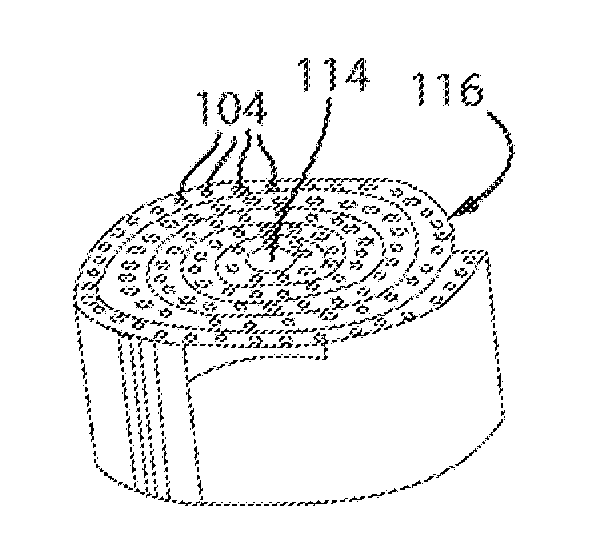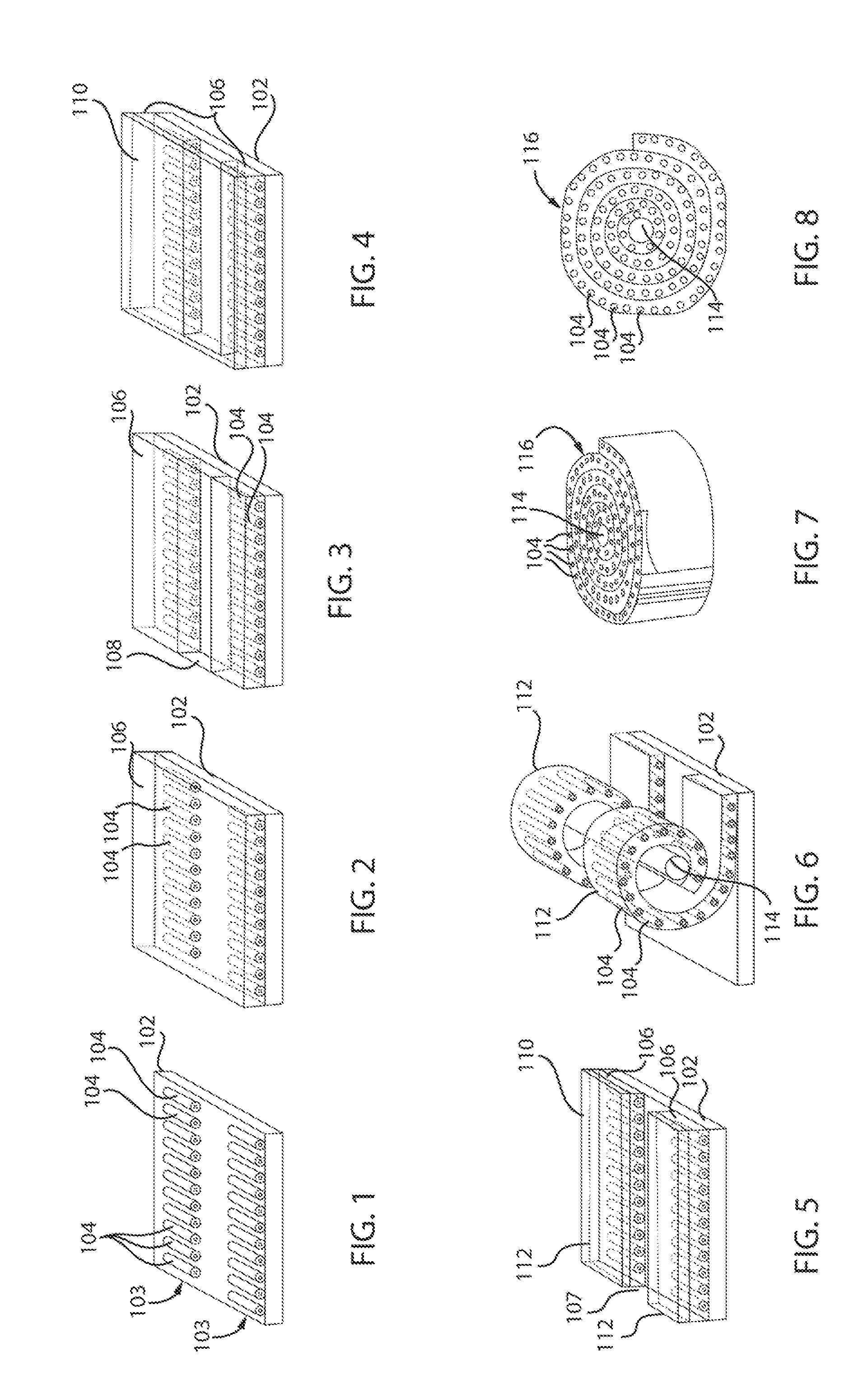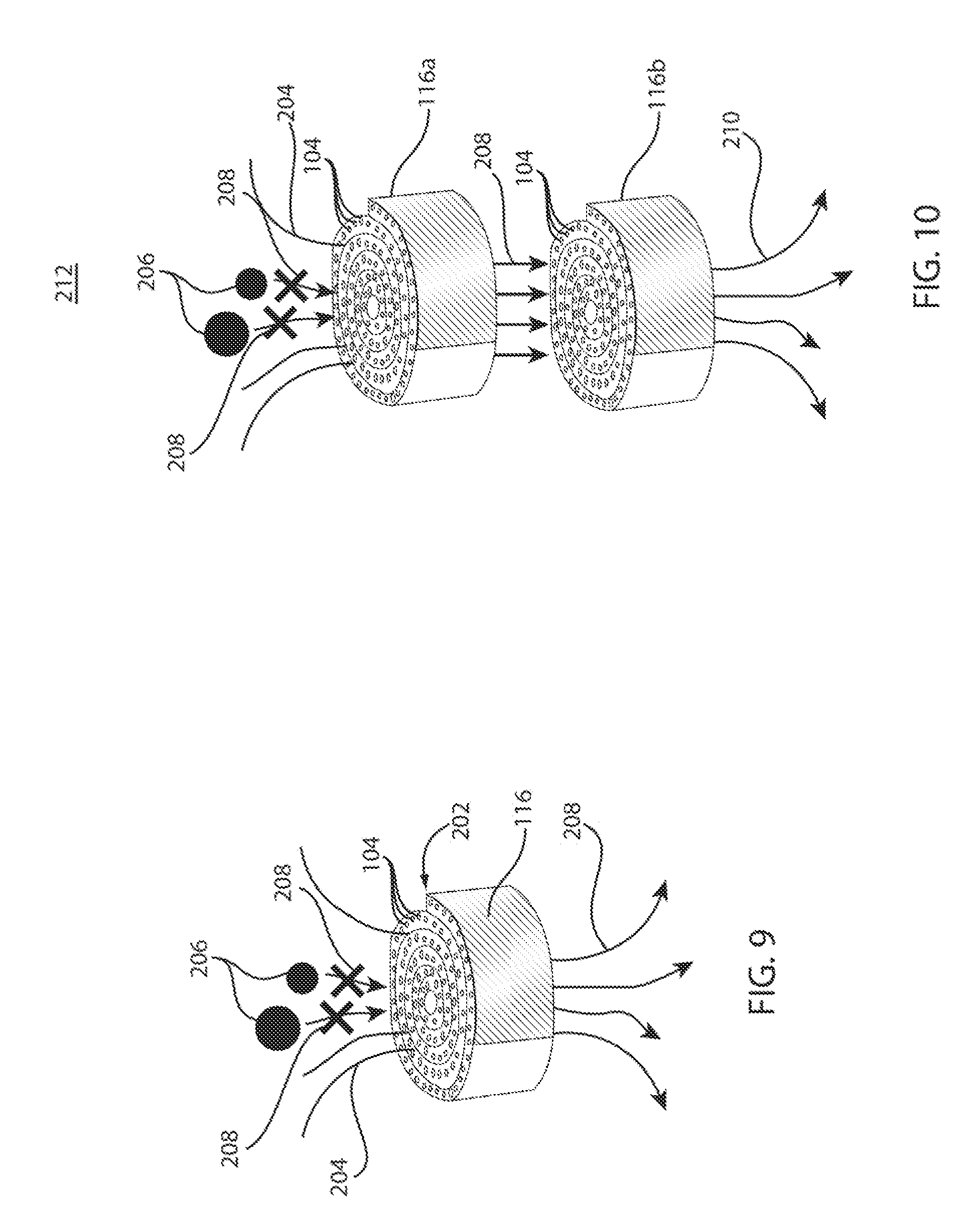Carbon nanotube based nanoporous membranes
- Summary
- Abstract
- Description
- Claims
- Application Information
AI Technical Summary
Benefits of technology
Problems solved by technology
Method used
Image
Examples
Embodiment Construction
[0022]In accordance with the present principles, macroscopic carbon nanotube-based nanoporous membranes are provided in which parallel carbon nanotubes (CNT) are enclosed in a polymeric matrix. The CNTs include inner cavities that act as the pores of the membrane. To obtain a filtration membrane, aligned CNTs are embedded in a polymeric matrix that can then be rolled-up on itself, yielding a macroscopic filtration membrane.
[0023]By fabricating macroscopic filtration membranes in this way, large scale series production of nanoporous membranes is possible, and the membranes are easily tunable. A number of pores per membrane can be controlled and is defined by the number of nanotubes in the original array. Pore diameter and thus membrane selectivity can be tuned by use of carbon nanotubes of a certain diameter.
[0024]These membranes may be applied not only for filtration, but also for, e.g., nano-reaction channels for catalysis and confined chemical synthesis applications; separation an...
PUM
| Property | Measurement | Unit |
|---|---|---|
| Thickness | aaaaa | aaaaa |
| Length | aaaaa | aaaaa |
| Density | aaaaa | aaaaa |
Abstract
Description
Claims
Application Information
 Login to View More
Login to View More - R&D
- Intellectual Property
- Life Sciences
- Materials
- Tech Scout
- Unparalleled Data Quality
- Higher Quality Content
- 60% Fewer Hallucinations
Browse by: Latest US Patents, China's latest patents, Technical Efficacy Thesaurus, Application Domain, Technology Topic, Popular Technical Reports.
© 2025 PatSnap. All rights reserved.Legal|Privacy policy|Modern Slavery Act Transparency Statement|Sitemap|About US| Contact US: help@patsnap.com



